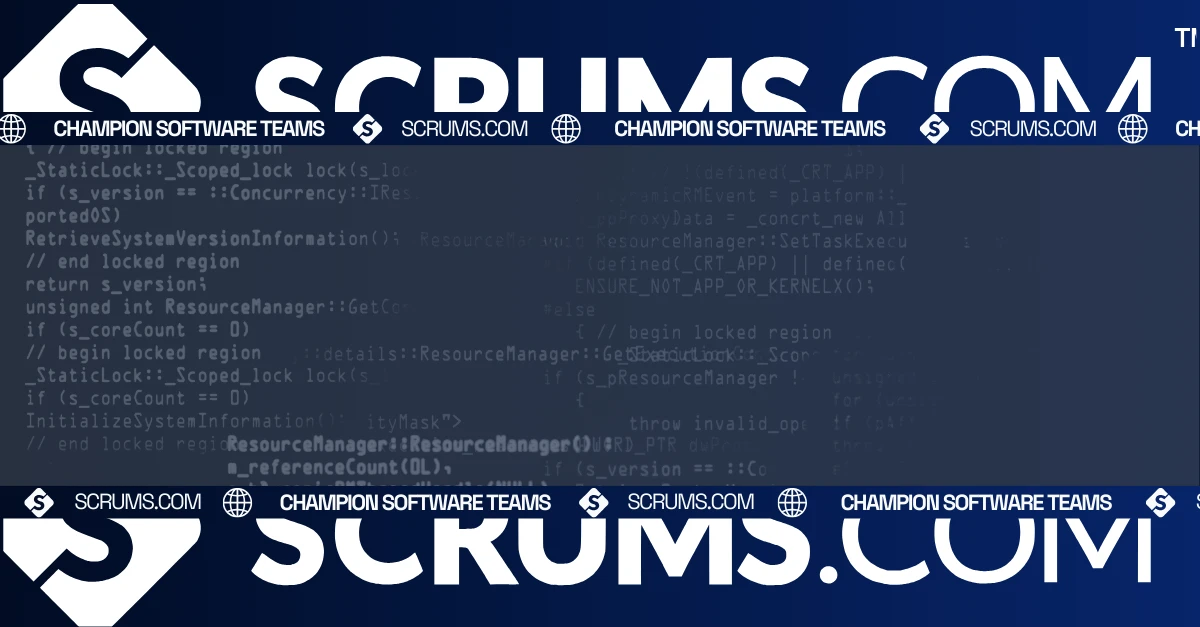React: Powerful JavaScript Library for Web Apps
Introduction to React
React is a widely-used JavaScript library for building user interfaces, primarily for single-page applications where speed and scalability are crucial. It is maintained by Facebook and a community of developers, making it a robust choice for businesses looking to create dynamic, high-performing web applications. For business owners and CTOs, React provides a scalable solution that aligns with modern software development practices, ensuring a seamless user experience and fast time to market.
What is React?
React, often referred to as a framework but technically a library, was initially released by Facebook in 2013. It was designed to solve the problem of building complex, interactive user interfaces in a more efficient and maintainable way. React's component-based architecture allows developers to build reusable UI components, streamlining the development process and enabling faster updates.
React is particularly effective in environments that demand high performance, interactivity, and scalability, such as e-commerce platforms, social networks, and SaaS products. It is also a preferred choice for building single-page applications (SPAs) and mobile applications when used in combination with React Native.
Core Features and Functionalities
Component-Based Architecture: Allows developers to create reusable components, which simplifies the development process and enables efficient code management.
Virtual DOM: React’s Virtual DOM minimizes the cost of real DOM manipulations, improving application performance by updating only the necessary parts of the UI.
Declarative UI: Enables developers to design views for each state of an application, making code more predictable and easier to debug.
Unidirectional Data Flow: Provides a structured data flow that helps maintain data integrity and simplifies debugging, making it easier to understand how data changes affect the UI.
React Hooks: Introduced in React 16.8, Hooks allow developers to use state and other React features in functional components, promoting cleaner and more concise code.
Extensive Ecosystem: Compatible with a vast array of libraries and tools, including Redux for state management, React Router for navigation, and Next.js for server-side rendering.
SEO Optimization: Supports server-side rendering (SSR) and static site generation (SSG) through frameworks like Next.js, which significantly improve SEO performance.
Cross-Platform Development: Integrates with React Native, allowing developers to build mobile applications using the same codebase, which reduces development time and costs.
Benefits for Businesses and Development Teams
For Businesses:
React helps improve return on investment (ROI) by accelerating the development process and reducing the cost of maintenance through reusable components. Its fast rendering capabilities enhance user experience, leading to higher customer satisfaction and retention rates. React’s large community and extensive resources ensure businesses have access to continual support and updates.
For Developers:
React offers significant technical benefits, including ease of use, flexibility, and a modular architecture that supports agile development practices. Its compatibility with numerous development tools and libraries enables seamless integration into existing projects. The unidirectional data flow simplifies state management, and React Hooks offer modern ways to handle state and side effects, making it ideal for developers looking to build dynamic, high-quality web applications.
Use Cases and Applications
React is versatile and widely adopted across various industries:
DevOps Workflows: Supports automated testing and CI/CD pipelines through integrations with tools like Jest, Mocha, and Jenkins.
Single-Page Applications (SPAs): React's efficient rendering and routing capabilities make it an ideal choice for SPAs that require fast load times and smooth user experiences.
Industry-Specific Applications:
- Fintech: Used to build responsive dashboards, data visualization tools, and secure web applications for financial transactions.
- Healthcare: Helps create user-friendly interfaces for patient management systems and telehealth platforms.
- Ecommerce: Powers dynamic and interactive front-ends for ecommerce sites, enhancing product browsing and checkout experiences.
Integration Capabilities and Ecosystem
React integrates seamlessly with a wide range of development tools, libraries, and platforms:
State Management: Redux, MobX, and Context API are popular tools for managing complex application state in React applications.
Routing: React Router is the de facto library for handling client-side routing, providing a simple and powerful solution for building SPAs.
Build Tools: Works well with Webpack, Babel, and other modern JavaScript build tools to optimize code for production.
Testing: Compatible with Jest, Enzyme, and Testing Library for unit, integration, and end-to-end testing.
Server-Side Rendering and Static Site Generation: Frameworks like Next.js and Gatsby enhance React’s SEO capabilities and performance by enabling SSR and SSG.
API Integration: Works well with RESTful APIs, GraphQL, and other data-fetching solutions to integrate backend services efficiently.
Cloud Platforms: Easily deployable on AWS, Azure, and Google Cloud, with options for serverless architectures using services like AWS Lambda and Firebase Functions.
Comparison with Alternatives
React competes with frameworks like Angular, Vue.js, and Svelte:
Pros: Large community and ecosystem, strong backing from Facebook, extensive libraries and tools, high flexibility, and fast rendering with Virtual DOM.
Cons: Learning curve for beginners, especially with concepts like JSX, state management, and hooks.
Cost Considerations: Open-source and free to use, with numerous resources and community support available at no cost.
Key Differentiators: React's component-based architecture, Virtual DOM, and flexibility in integrating with other tools and frameworks make it a preferred choice for developers.
When to Choose React
Choose React if you need a flexible, fast, and scalable solution for building interactive user interfaces, particularly for single-page applications, mobile apps, or complex, data-driven web applications. React is ideal for businesses and teams that prioritize rapid development, maintainability, and strong community support.
Getting Started with React
To get started with React:
- Install Node.js and npm: Ensure you have Node.js and npm installed on your machine.
- Set Up a New React Application: Use
create-react-appto set up a new project quickly. - Create Components: Start building your application by creating reusable components using JavaScript and JSX.
- Manage State: Use React's state management tools like Hooks, Context API, or integrate Redux for more complex state management.
- Deploy the Application: Deploy your React application using platforms like Vercel, Netlify, or any cloud provider for scalable and secure hosting.
For comprehensive guides and tutorials, explore React documentation.
Related Tools and Resources
Guide to State Management with Redux
Explore Related Software Development Tools
FAQs
We've got you covered, these are some common questions we receive. Not seeing the answer to something?...
React is used for building web applications, while React Native is for building mobile applications using React's principles.
Yes, React is highly scalable and used by large companies like Facebook, Instagram, and Airbnb for their web applications.
Yes, React supports TypeScript, providing better type safety and tooling for large projects.
Hooks allow you to use state and other React features in functional components, simplifying component logic and making code more readable.
React supports server-side rendering (SSR) and static site generation (SSG) through frameworks like Next.js, which improves SEO by pre-rendering pages.
Yes, React is an open-source library with a large community providing free resources, plugins, and support.
Explore Software Development Blogs
The most recent trends and insights to expand your software development knowledge.






